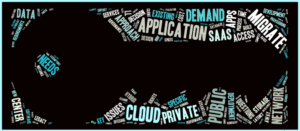Migrating Applications to the Cloud
 You want to migrate legacy applications to the cloud, right?
To meet the needs of your enterprise, it’s become an imperative. It might sound simple, but you’ve discovered it’s not.
Let’s take a look at the keys you need to consider before you pull the trigger.
You want to migrate legacy applications to the cloud, right?
To meet the needs of your enterprise, it’s become an imperative. It might sound simple, but you’ve discovered it’s not.
Let’s take a look at the keys you need to consider before you pull the trigger.
 You want to migrate legacy applications to the cloud, right?
To meet the needs of your enterprise, it’s become an imperative. It might sound simple, but you’ve discovered it’s not.
Let’s take a look at the keys you need to consider before you pull the trigger.
You want to migrate legacy applications to the cloud, right?
To meet the needs of your enterprise, it’s become an imperative. It might sound simple, but you’ve discovered it’s not.
Let’s take a look at the keys you need to consider before you pull the trigger.
If only application migration was as simple as application creation
The benefits of running apps on a cloud infrastructure have become fairly familiar:- Scalability on demand
- Cost containment
- Elimination of complex maintenance processes
- Operating systems
- Hardware
- Geography
- Latency
- Throughput
- Scalability
- Governance
- Access rights
- Monitoring requirements
6 key questions to examine before migration
When planning to migrate applications to the cloud, six pressing questions emerge:
- Should you migrate to a public cloud or a private cloud within your existing data center?
- Can the application be moved to the public cloud?
- Should you engage in an application remediation strategy or rebuild from scratch?
- Should you “hybridize” the application to move only some functionality to the public cloud?
- Are public cloud SaaS solutions feasible for end users?
- Is portability across multiple heterogeneous clouds important?
- Governance
- Regulatory constraints
- Security restrictions
- Access rights
- SLA commitments
A private cloud is often the answer
A private cloud can often deliver many of the same advantages of the public cloud. You may be able to deploy similar mechanisms within the existing data center and implement an on-demand, API-driven orchestration layer. The private cloud offers a viable approach when:- Demand is predictable. If you know the compute capacity and storage you’ll need a year from now, you can provision virtual or dedicated servers to meet the demand. When capacity is unpredictable, private cloud deployments can prevent the waste that comes from over-provisioning or the congestion woes of under-provisioning.
- Demand is consistent. A private cloud deployment makes sense for services that have the same amount of volume every hour, day, and month. In industries, such as retail and online gaming, where demand spikes at various times the public cloud is the smarter option.
- Apps and devices are tightly coupled. If an application is tightly integrated with other applications or hardware (such as network attached storage devices), it may encounter latency issues and other problems when migrated to a public cloud. Private cloud deployment will help mitigate these issues.
- Network access is specific. If applications must access specific networks to connect to clients, offices, or other network dependent entities, private cloud may be the only choice (due to the ability to deploy hardware on a specific network or combination of networks).


